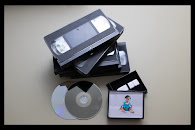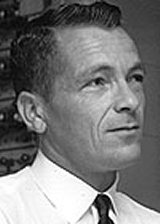The
VCR
Introduction
For the EOTO(Each One Teach One ) project, the technology I chose was the VCR. The reason why I chose the VCR is because it is very nostalgic. Not only is it nostalgic, but it was one of the first technologies to define American television culture within the homes of families and generations.
When was it invented ?:

https://lemelson.mit.edu/resources/charles-ginsburg
According to my research, the inventor of the VCR was Charles Paulson Ginsburg, also known as the “ father of the VCR. he was born in San Francisco , 1920. He received his Bachelor's degree from San Jose State university. In 1948, Ginsburg worked as a studio and transmitter engineer at a radio station in San Francisco. In 1952, Ginsburg then went on to work for Ampex, which is an American electronics company that was founded by Alexander M. Poniatoff in 1944. There , Ginsbuhatrg had the opportunity to lead a research team which developed the first broadcast quality Video Tape Recorder known as the (VTR). The VTR revolutionized television broadcasting. Tape recording of television signals traces back just after WW2, when audio tape recorders were used to record very high frequency signals needed for television. These early machines were pushed to their limits that ran tapes at very high speeds up to 240 inches per second inorder to achieve a high frequency response. However, Ginsburg and his team came up with a design for a new machine that could run at a slower rate. The ampex VRX-1000( later renamed the Mark IV video tape recorder which was introduced in 1956. However, Ginsburg held the position of vice president of advanced development at Ampex from 1975 until his retirement in 1986.
What makes the VCR special and its impact :
According to the “Television and the American Family”, https://books.google.com/books?id=VbSPAgAAQBAJ&printsec=frontcover&source=gbs_ge_summary_r&cad=0#v=onepage&q&f=false
The VCR was first introduced in 1975, at a price of $2,500 which symbolized the beginning of the cultural revolution. In 1980 the VCR was owned by 1.1% of television homes in America. By the end of 1997 the percentage increased to about 89%. By the year 2000, the percentage had increased to 93%. However , the VCR served at least three functions in the home and video culture. It supplied home entertainment, it replaced other leisure activities and most importantly provided social unity. There are several reasons why the VCR plays an important role in our home and video environment. According to “Television and the American Family”, the VCR is the first video communication medium that allows us to have control of when , where , how and what to watch on television. While doing my research about the VCR, some of the most interesting facts about this technology that really stood out to me was the structure of the VCR. VCR’s are built for the reception and recording signals that are transmitted by a direct broadcast satellite. Another thing that I found the most fascinating about the vcr was that an active vcr user is even more mentally and physically active than an average active t.v. audience member. Overall, the vcr will stand out as one of the most significant contributions to the 20th century.





No comments:
Post a Comment